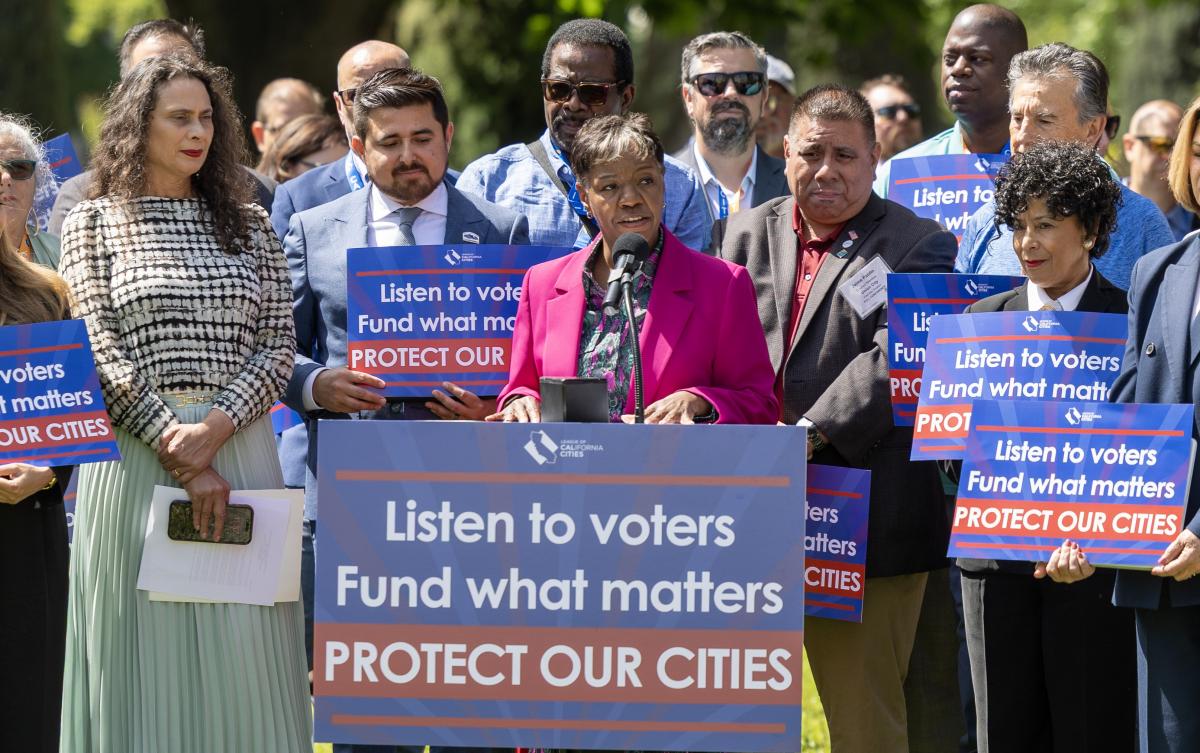Solving homelessness takes more than removing encampments
Just a few weeks ago, the California Assembly and cities throughout the state came together for California Cities Week, a weeklong celebration recognizing all the ways our state’s 483 cities and towns — and dedicated city officials — make life better for all Californians.
California has four cities each with a population larger than the entire state of Wyoming (pop. 567,618). Over 300 cities have a population under 50,000. But all our cities share the same vision of creating safe, welcoming places where people can live, work, and play and businesses can thrive.
How each city pursues that vision varies greatly. With their boots on the ground every day, city officials know and understand their community’s needs. And it’s strong partnerships that fully leverage state and local investments in locally driven solutions that will help local officials achieve this vision.
Nowhere is the need for this strong partnership more evident than in California’s seemingly intractable homelessness crisis. In far too many cities, people are falling into homelessness faster than cities alone can connect them to the services and housing they need.
Residents know that cities and the state have a role to play in addressing this crisis. New polling from Politico and the UC Berkeley’s Citrin Center confirms what we’ve been seeing locally for years: Addressing housing and homelessness was “far and away the biggest shortcoming of state government — and the most pressing issue facing California.”
As the public’s frustration grows, the spotlight is on one of the more visible aspects of this crisis: encampments in public spaces.
Late last year, Gov. Gavin Newsom issued an executive order encouraging cities to address encampments or risk losing access to state homelessness funding. The order came a few months after the U.S. Supreme Court in Grants Pass v. Johnson ruled that cities can enforce rules prohibiting camping in public outdoor spaces. Cal Cities filed an amicus brief in the case, urging the court to provide clarity over such ordinances.
Cal Cities’ new survey data gives us some idea of how important the Grants Pass decision is. Only one in five cities have access to state funding to address encampments. That’s one of the reasons why eight in ten cities are using their general fund dollars to address encampments.
Yet, we will never solve homelessness just by removing encampments.
Cities are taking different approaches, tailored to their community’s needs. Using general fund dollars, San Luis Obispo developed a consistent and compassionate response that addresses encampments, helps connect people to shelter and services, prevents health and safety risks, and maintains clean and accessible public spaces.
To keep Californians out of encampments and in housing permanently, cities need ongoing state funding at a level that matches the scale of the crisis.
For years, Cal Cities has called for ongoing funding to support city efforts to prevent and reduce homelessness. This advocacy helped secure funding for the Homeless Housing, Assistance and Prevention (HHAP) grant program for the last six years. For the cities that receive it, the funding can be transformational. The city of Riverside uses HHAP resources to target homeless youth. Earlier this year, officials announced that more youth are exiting homelessness than they are entering.
Riverside Mayor Patricia Lock Dawson put it best when she said, “We can solve homelessness when we work together — so let’s continue the work.”
Cities have demonstrated what they can do with funding: HHAP funding can stem our homelessness crisis. But without a permanent home for such funding in the state budget, cities cannot plan for the future or implement systems at the scale needed to make lasting progress.
The homelessness crisis is decades in the making. There is no quick fix. What I know to be true is that it will take every level of government committed to building a system where every unhoused resident has the support, housing, and resources they deserve.


